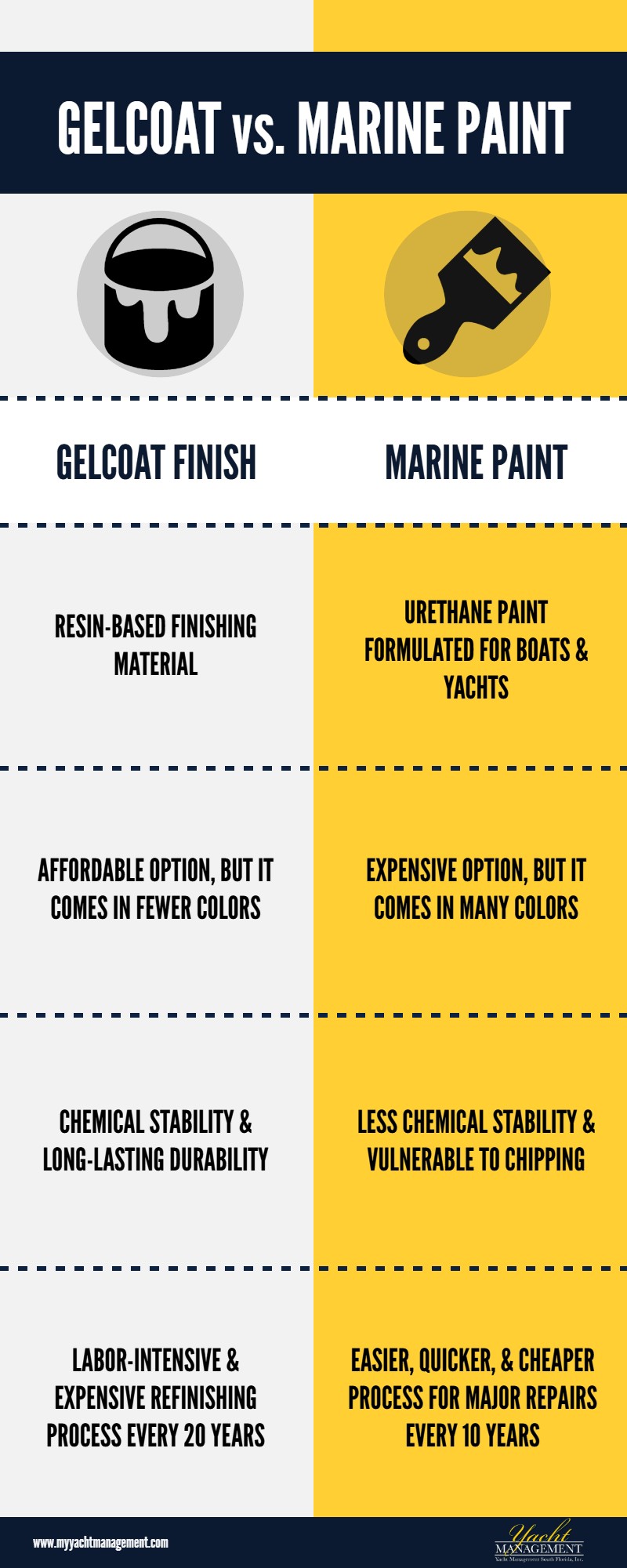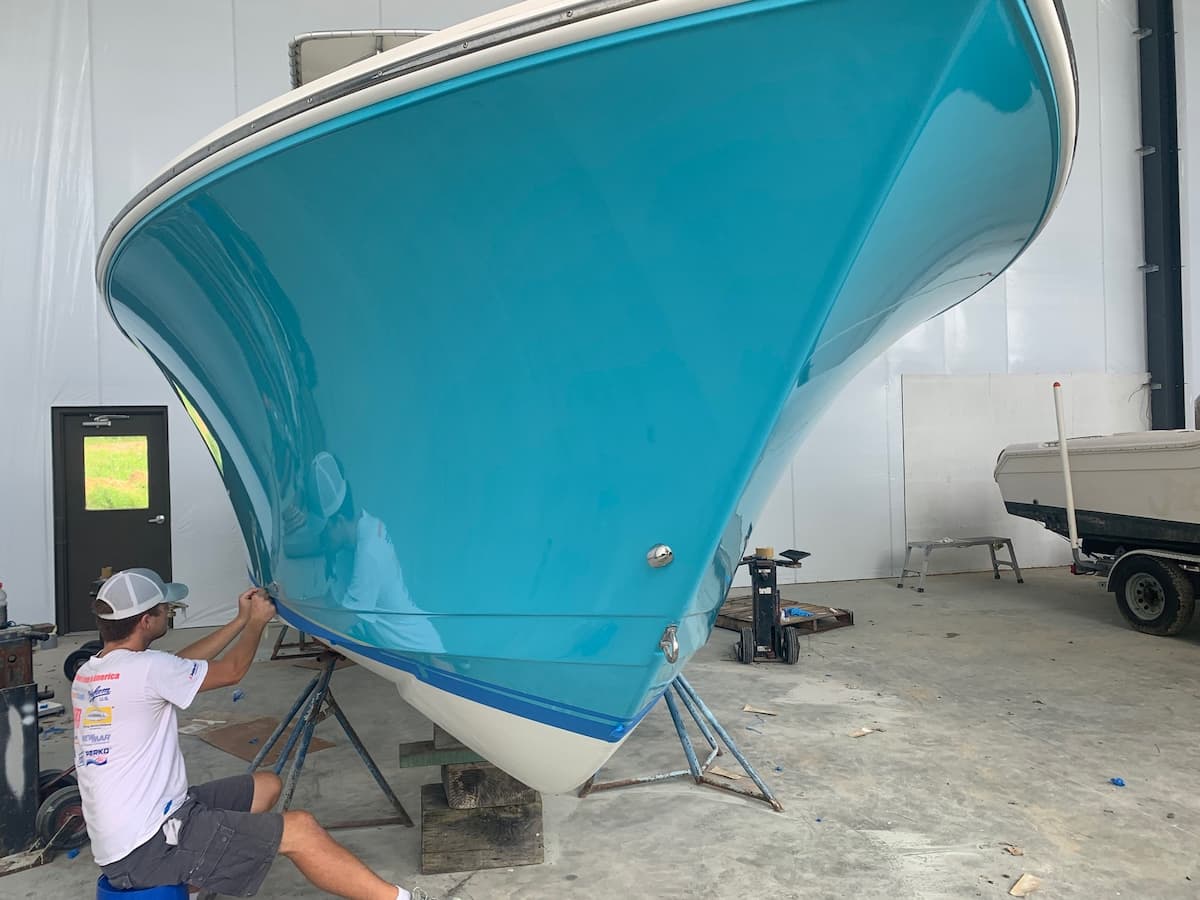Yes, you can paint over gel coat. Gel coat is a durable, protective coating used on fiberglass surfaces, and painting over it is a common practice to update or change the appearance of the surface.
However, proper preparation, including cleaning, sanding, and priming, is essential for the paint to adhere effectively. By following these steps, you can achieve a smooth and long-lasting finish when painting over gel coat. Whether you want to refresh the color of your boat, RV, or other fiberglass surfaces, painting over gel coat is a viable option that can give your project a new and vibrant look.

Credit: www.reddit.com
Contents
Introduction To Gel Coat
Gel coat is a protective layer applied to fiberglass surfaces, but can you paint over it? Yes, you can paint over gel coat by following the proper preparation steps, such as sanding and cleaning the surface, before applying the paint.
It’s important to ensure a smooth and durable finish.
What Is Gel Coat?
Gel coat is a type of resin that is applied as a coating on the surface of fiberglass or composite materials. It is a thick, viscous liquid that is sprayed or brushed onto the surface of the material to create a smooth, glossy finish. Gel coat provides a protective layer that not only enhances the appearance of the surface but also protects it from water, UV rays, and other environmental factors.Benefits Of Using Gel Coat
Gel coat is widely used in the marine industry for its many benefits. Some of the benefits of using gel coat include:- Protection from water and UV rays
- Creates a smooth and glossy finish
- Enhances the appearance of the surface
- Resistant to scratches and impacts
- Easy to apply and maintain
Preparation For Painting Over Gel Coat
Cleaning The Surface
Before painting over gel coat, it is crucial to thoroughly clean the surface to ensure proper adhesion of the new paint. Begin by washing the surface with a mild detergent and water to remove any dirt, grease, or other contaminants. After cleaning, rinse the surface thoroughly and allow it to dry completely.
Sanding The Gel Coat
Next, sanding the gel coat is necessary to create a rough surface for the new paint to adhere to. Use fine-grit sandpaper to gently sand the entire surface, creating a smooth and uniform texture. Be sure to remove any glossy or shiny areas, as these can prevent the new paint from properly adhering.
Applying A Primer
Once the surface is clean and sanded, applying a primer is essential to promote adhesion and create a suitable base for the new paint. Choose a high-quality primer that is compatible with both the gel coat and the type of paint you plan to use. Apply the primer evenly and allow it to dry completely before proceeding with the painting process.
Selecting The Right Paint
When it comes to painting over gel coat, selecting the right paint is crucial to ensure a successful and long-lasting finish. With the right type of paint and careful consideration of color and finish, you can achieve a professional-looking result that enhances the appearance of your gel coat surface.
Types Of Paint Suitable For Gel Coat
When considering painting over gel coat, it’s essential to choose a paint that is specifically formulated to adhere to the surface and provide durable coverage.
- Epoxy-based paints are highly recommended for their excellent adhesion to gel coat surfaces, creating a strong and resilient bond.
- Polyurethane paints are also suitable for painting over gel coat, offering exceptional resistance to UV rays and harsh weather conditions.
- Acrylic paints can be used for smaller touch-up jobs, providing a quick and easy solution for minor imperfections on gel coat surfaces.
Considering Color And Finish
In addition to selecting the right type of paint, the color and finish play a significant role in achieving the desired aesthetic appeal for your gel coat surface.
- Consider the color compatibility with the existing gel coat to ensure a seamless and uniform appearance.
- Determine the desired finish, whether it’s glossy, matte, or satin, to enhance the overall look of the painted surface.
- Opt for UV-resistant paints to maintain the vibrancy of the color and prevent fading over time, especially for outdoor applications.

Credit: www.myyachtmanagement.com
Painting Process Explained
When it comes to painting over gel coat, the process requires attention to detail and the right technique to ensure a smooth, professional finish. Understanding the painting process is crucial for achieving the desired results. In this section, we will delve into the step-by-step procedure for painting over gel coat, from applying the first coat to drying times and conditions, and applying additional coats.
Applying The First Coat
Before painting over gel coat, it’s essential to prepare the surface properly. Start by cleaning the surface to remove any dirt, grease, or contaminants. Sand the gel coat lightly to create a good surface for the paint to adhere to. Once the surface is clean and prepped, apply the first coat of paint using a high-quality brush or spray gun. Ensure that the paint is applied evenly to achieve a consistent finish.
Drying Times And Conditions
After applying the first coat of paint, it’s crucial to allow sufficient drying time. Follow the manufacturer’s instructions regarding the recommended drying times and conditions. Ideally, the painted surface should be left to dry in a dust-free environment with adequate ventilation. Maintain the recommended temperature and humidity levels to facilitate proper drying and curing of the paint.
Applying Additional Coats
Once the first coat has dried completely, inspect the surface for any imperfections or uneven areas. If necessary, lightly sand the surface again before applying additional coats of paint. Apply subsequent coats following the same technique as the first coat, ensuring even coverage and smooth application. Allow adequate drying time between each coat to prevent any issues with the final finish.
Finishing Touches
When it comes to refinishing a surface with gel coat, the finishing touches are crucial to achieving a professional and durable result. From sanding between coats to applying a topcoat, each step plays a pivotal role in the overall quality of the finish. Let’s dive into the essential aspects of the finishing touches when painting over gel coat.
Sanding Between Coats
Sanding between coats is a critical step in the refinishing process. It helps to ensure adhesion and smoothness of the surface, creating an ideal foundation for the next coat of paint. Use a fine-grit sandpaper, such as 320-grit, and gently sand the gel coat surface to remove any imperfections and create a slightly rough texture for the new coat to adhere to.
Applying A Topcoat
Applying a topcoat is the final step in the process of painting over gel coat. Once the base coats have been applied and sanded, it’s time to apply a protective topcoat to enhance the durability and appearance of the finish. Choose a high-quality marine-grade topcoat that is compatible with gel coat surfaces for optimal results.
Maintenance Tips
Maintaining gel coat can be a challenging task, but can you paint over it? Discover helpful tips and techniques to effectively paint over gel coat surfaces, ensuring a smooth and long-lasting finish.
Maintaining a gel coat is crucial to ensure it lasts for a long time. Whether you’re planning to paint over the gel coat or not, taking proper care of it is essential. Here are some maintenance tips to keep in mind if you want to paint over gel coat:Regular Cleaning
Regular cleaning is the key to maintaining the gel coat’s shine and preventing any damage. You should clean the gel coat at least once a month with a mild detergent and water. Be sure to rinse it thoroughly with clean water and dry it with a soft cloth. Avoid using abrasive materials or cleaners that contain harsh chemicals as they can damage the gel coat.Protecting From Uv Damage
UV rays can cause the gel coat to fade and become discolored over time. To protect it from UV damage, you can use a wax or polish that contains UV inhibitors. Apply it to the gel coat after cleaning and drying it thoroughly. You can also use a cover to protect the gel coat from direct sunlight when the boat is not in use.Painting Over Gel Coat
If you’re planning to paint over the gel coat, there are a few things you should keep in mind. First, you need to prepare the surface properly by cleaning, sanding, and priming it. Use a high-quality marine paint that is compatible with gel coat. Apply the paint in thin, even coats and allow it to dry completely before applying the next coat. Taking care of the gel coat is essential to ensure it lasts for a long time and looks great. Whether you’re planning to paint over it or not, following these maintenance tips will help keep your gel coat in top condition.Common Mistakes To Avoid
When painting over gel coat, it’s crucial to avoid common mistakes that could lead to subpar results. By steering clear of these pitfalls, you can ensure a smooth and successful painting process. Let’s explore some of the most prevalent errors to avoid when painting over gel coat.
Skipping Primer
One common mistake when painting over gel coat is skipping the primer. Primer is essential for promoting adhesion and creating a smooth surface for the paint to adhere to. Without primer, the paint may not bond properly with the gel coat, leading to peeling and uneven coverage.
Poor Surface Preparation
Another critical mistake to avoid is poor surface preparation. Failing to properly prepare the surface by cleaning, sanding, and ensuring it’s free of contaminants can result in paint adhesion issues and an uneven finish. Thorough surface preparation is key to achieving a professional and long-lasting paint job.
Case Studies And Success Stories
If you’re wondering whether you can paint over gel coat, you’re not alone. Many boat owners have asked the same question, and the answer is a resounding yes! In fact, painting over gel coat is a popular way to update the look of a boat and protect it from the elements.
Before And After Transformations
Don’t just take our word for it. Let’s take a look at some real-life examples of boats that have been painted over gel coat with stunning results. These before and after transformations demonstrate just how much of a difference a fresh coat of paint can make.
| Before | After |
|---|---|
 |
 |
| The gel coat on this boat had faded and become dull over time. | After painting, the boat looked brand new and turned heads on the water. |
Testimonials From Boat Owners
But don’t just take our word for it. Here are some testimonials from boat owners who have painted over gel coat:
- “I was skeptical at first, but painting over the gel coat gave my boat a whole new lease on life. It looks better than it did when it was brand new!” – John, Florida
- “I was worried that the paint wouldn’t adhere properly, but the professionals I worked with made sure to properly prep the surface and the end result was amazing. I couldn’t be happier!” – Sarah, California
- “I was tired of the outdated look of my boat, but didn’t want to invest in a whole new paint job. Painting over the gel coat was the perfect solution and saved me a lot of money in the process.” – Mike, Texas
As you can see, painting over gel coat is a viable option for boat owners looking to update their vessel’s appearance. With proper preparation and a quality paint job, you can achieve a stunning transformation that will turn heads on the water.

Credit: sdmarina.com
Frequently Asked Questions
Can You Paint Over Gel Coat With Automotive Paint?
Yes, you can paint over gel coat with automotive paint. However, it is important to prepare the surface properly by sanding and cleaning it thoroughly. Additionally, using a primer specifically designed for gel coat can ensure better adhesion of the automotive paint.
How Do You Prepare Gelcoat For Paint?
Prepare gelcoat for paint by sanding the surface, cleaning with acetone, and allowing it to dry. Apply a primer designed for gelcoat, then sand lightly before applying the paint. Make sure to follow the manufacturer’s instructions for best results.
Can You Gelcoat Over Gelcoat?
Yes, you can apply gelcoat over an existing layer of gelcoat. However, it is important to properly prepare the surface by sanding and cleaning before applying the new layer. This will ensure proper adhesion and a smooth finish.
Do You Need To Use Primer On Gelcoat?
Yes, using a primer on gelcoat is recommended to improve adhesion and durability of the topcoat.
Conclusion
After considering all the factors, it is clear that painting over gel coat is possible, but it requires proper preparation and the right materials. While gel coat is a durable material, it can become worn or discolored over time, and painting it can be a cost-effective way to give it a fresh look.
However, it is important to follow the proper steps to ensure that the paint adheres properly and provides a long-lasting finish. With the right tools and techniques, painting over gel coat can be a relatively simple DIY project that can transform the look of your boat or other fiberglass surface.
